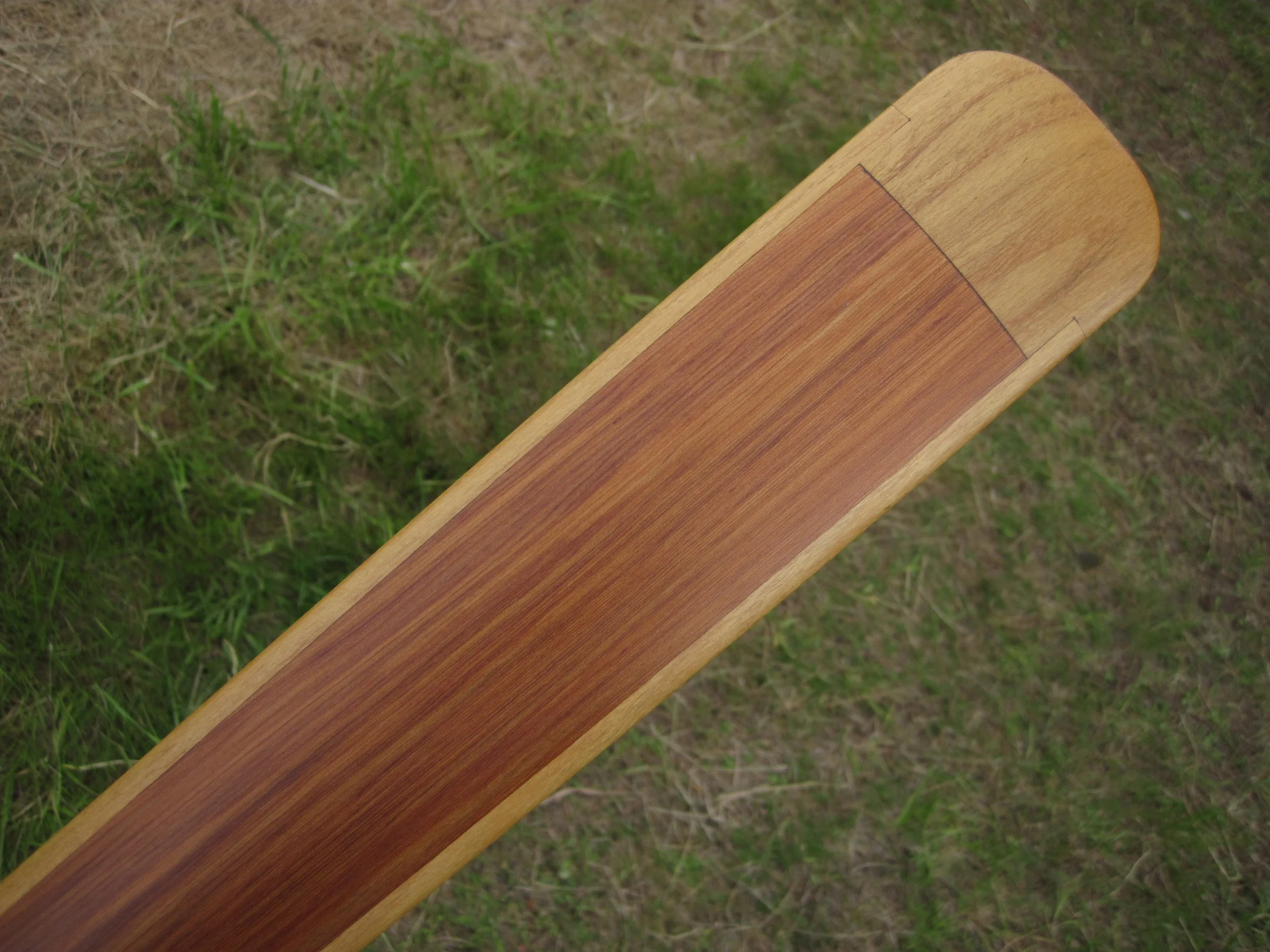A Greenland-style kayak paddle can be a wonderful thing; practical, simple, beautiful, subtle, ergonomic, natural. The chance to build these qualities into a Thing is a rare opportunity that I enjoy immensely.
stock or Custom?
I offer custom-built Greenland paddles as well as stock paddles. (edit: custom paddle orders are temporarily suspended) The prices are the same. The advantage to buying a stock paddle is the turnaround time is much shorter, and you are dealing with known qualities. For example, in the store I show actual photos of the paddle being offered, with finished weight, critical dimensions, and a comment from me. However, people and boats are infinitely variable, and often I will need to build a custom paddle to fit your needs. In that case you'll have to wait about 3-5 weeks for your paddle to arrive. Contact me and we'll discuss it. General sizing information here.
About the paddles:
I build Greenland paddles primarily with Western Red Cedar and Black Locust, a nearly ideal combination of materials for a paddle. The cedar is light and straight grained, and the locust is tough and ornery. The tips of locust are fitted to the cedar body with either a tongue and groove or a mortise and tenon joint, and finally glued with West System G-Flex epoxy. Again, the G-flex is the best glue out there for this purpose, being far more flexible than traditional glues and epoxy of adequate strength for a paddle.
Shape:
The blade is designed to give you a quiet entry, flutter-free power stroke, and ending with a lively feel as the blade flexes, cleanly exiting the water. I take care to fine-tune the flex-curve of each paddle for strength and feel. Like a bow, spar, or wing, this flex must be even and progressive for optimum strength. This transition from tip of blade down to loom ensures the paddle won’t snap during must-make, extended paddle maneuvers. Symmetrical inline blades, a shoulder, and a rounded-rectangular loom makes blade indexing simple when you're fatigued, as well as allowing easy setup for rolls, sculls and braces.
Finish:
After sanding, each paddle is finished with several coats of "boat soup", a traditional mixture of of raw tung oil, turpentine, and pine tar. I use this mixture for its excellent combination of protection, feel, easy maintenance, and renewable less toxic ingredients. While I'm on the subject, I want to post a photo which I believe has caused some confusion on my old paddles site. The paddle below is NOT varnished; that is a WET paddle. I would never use varnish on a paddle because it will raise blisters. Same goes for oar grips, hammers, axes, pulaskis, mattocks, shovels, pitchforks, kitchen knives, and broom handles.
not varnish, however its very likely this paddle is wet







